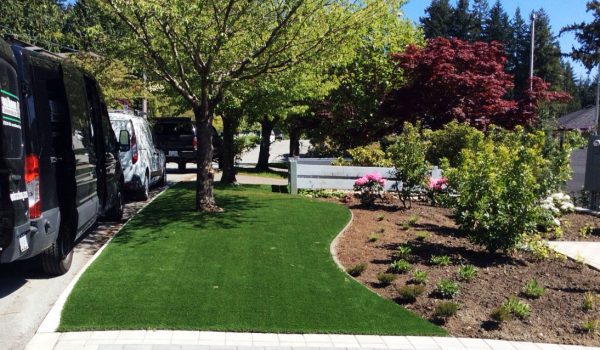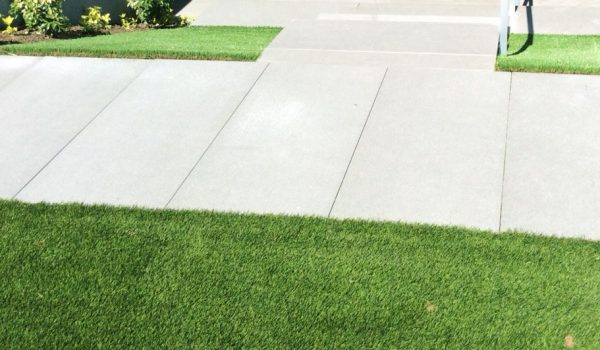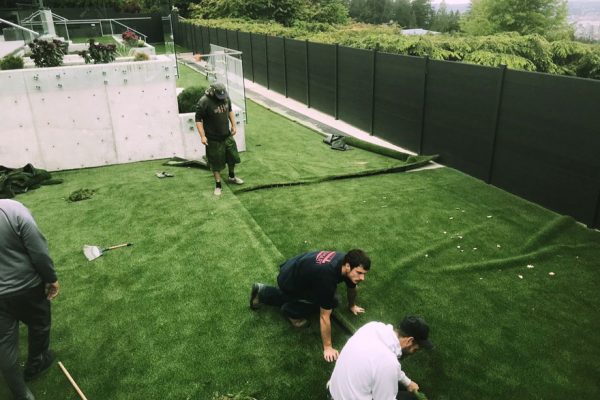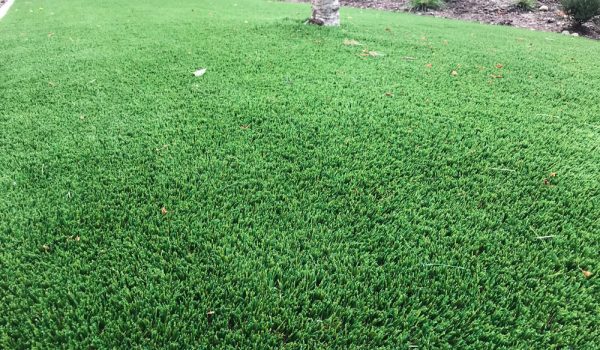Did you know that watering lawns accounts for ⅓ of all residential water consumption in North America?
Even though it’s a living organism, grass isn’t super eco friendly for residential construction. In fact, a lot of homes concerned with being green are moving away from grass, and instead opting for things like desert gardens, rock displays, and, our personal favourite – synthetic turf.
If those two words bring to mind rough, neon green plastic fields, you’re probably not alone. Luckily, synthetic turf has come a long way from the astroturf seen on the Brady Bunch – the latest generation looks so similar to grass that it’s actually difficult to tell the two apart.
Check out these photos of our Rondoval Project, which we just completed.
Can you tell the difference?


Below, you’ll find the reasons why we opt for synthetic turf and recommend it to our clients – you be the judge!
The pros of synthetic turf
1. Water savings
As mentioned, you’ll save ⅓ of your water usage every year – this amounts to around 55 gallons of water per square foot every year!
2. Energy savings
You’ll also save the energy costs associated with lawns, like mowing, trimming, and edging.
3. No chemicals
Synthetic turf doesn’t require any chemically-laden fertilizers that can run off into groundwater.
4. Lifespan & recycled materials
The turf has a lifespan of at least 25 years, and is often made from recycled materials like tires or plastic bottles.
5. It looks and feels like grass.. for real
The latest generation of synthetic turf has a soft texture and is completely customizable in terms of colour, length and feel.
6. Year-round greenery
As Vancouver gets hotter, natural lawns spend most of the summer looking brown, and most of the winter covered in an inch or two of water. Synthetic turf stays green and well-drained all year round!
The cons of synthetic turf
No product is perfect, and synthetic turf does come with its own drawbacks.
1. It gets hotter than grass in direct sunlight
This is more of a problem in places like California that see searing-hot temperatures in the summer, but turf does definitely heat up more than grass. To combat it, we like to include leafy bushes and trees in our landscaping plans, to offer shady spots for our short stints of heat in Vancouver.
2. It’s difficult to recycle
There are only a handful of places that are able to recycle turf… for now. The industry is constantly evolving, and we expect to see more chances for a second life for this material soon.
3. It doesn’t immediately absorb pet urine
Gross, right? If you have pets, though, it’s an important to consider – you’ll need to take them elsewhere for their daily constitutional.
4. It’s more expensive to install
There’s no way to get around the initial purchase and installation fee of the synthetic turf, but the costs over time are lower than grass (remember, no watering, mowing, or fertilizing!).

A picture from when we installed the synthetic grass at our Rondoval project.
Whatever you choose to do with your yard, we’d recommend not ruling out synthetic turf – the savings, look & feel, and environmental benefits are worth a second look!
